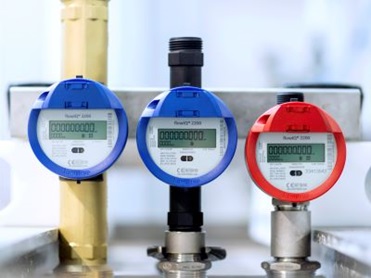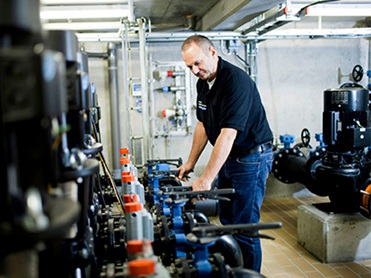
-
Solutions
- Customer references
- Insights
- News
- About us
- Contact
Smart water metering by Kamstrup
Unleash the potential of knowledge in smart water metering
Maintaining the distribution network and detecting water leakages are ongoing challenges for any water utility. Traditionally, locating leaks has been time-consuming and renovating pipes based on their age alone was always less than optimal.
The newest generation of smart metering solutions changes all this. Real knowledge based on intelligent meter data keeps you up to speed on flow, temperature, bursts and more, allowing for accurate billing, faster leakage detection and efficient renovation of your distribution network. You can work more efficiently, proactively maintain pipes and reduce non-revenue water – all while ensuring a high security of supply.
And it doesn't stop there. Take customer service to the next level by offering much more than just accurate billing. Our solutions allow you to provide the readily available information that today's customers have come to expect.
It's time to unleash the potential of knowledge in smart water metering. It's time to know!
Smart metering inspiration
E-book on water management and digitalisation
The e-book dives into three main topics: non-revenue water, digitalisation, and leakage detection.
Explore the opportunities digitalisation offers and get inspired by the approaches other water utilities take to water management.
Let’s improve the way we handle non-revenue water.Smart water metering by Kamstrup
Based on our 15 years’ of experience in the water industry, we provide utilities around the world with state-of-the-art ultrasonic water meters, high-performing remote reading solutions, advanced monitoring of pressure and leakages as well as intelligent data analytics.
For us, smart metering is an intelligent enabler for improving consumer relations and optimizing operations. It is about quality management, revenue protection, asset management and Non-Revenue Water. About being able to make the right choices and chose the right investments.
We deliver solutions in all shapes and sizes, but while every project is unique, our starting point is always the same – you, the customer.
What if your meters could hear, the leaks you cannot see?
Now, you can let every smart water meter work for you to help locate leaks and create an unprecedented transparency in your distribution network. Acting like a fine-meshed network of noise loggers, the flowIQ® 2200 water meters listen to the distribution lines and service connections to detect leakages.
Eliminate non-revenue water
How smart metering can help fight water loss. Non-revenue water is a global problem that leads to huge water losses with an average of 23% of drinking water lost in EU distribution networks.






